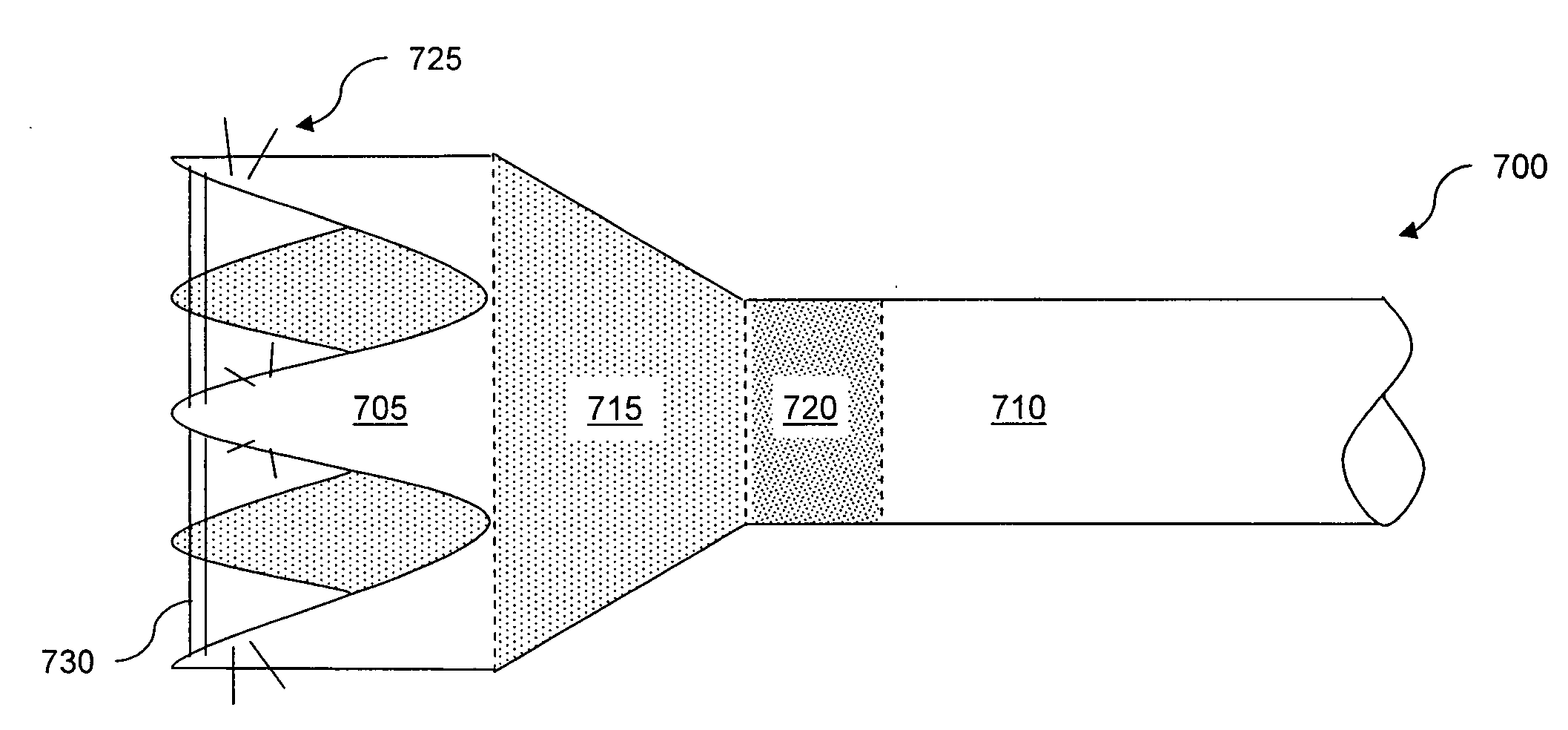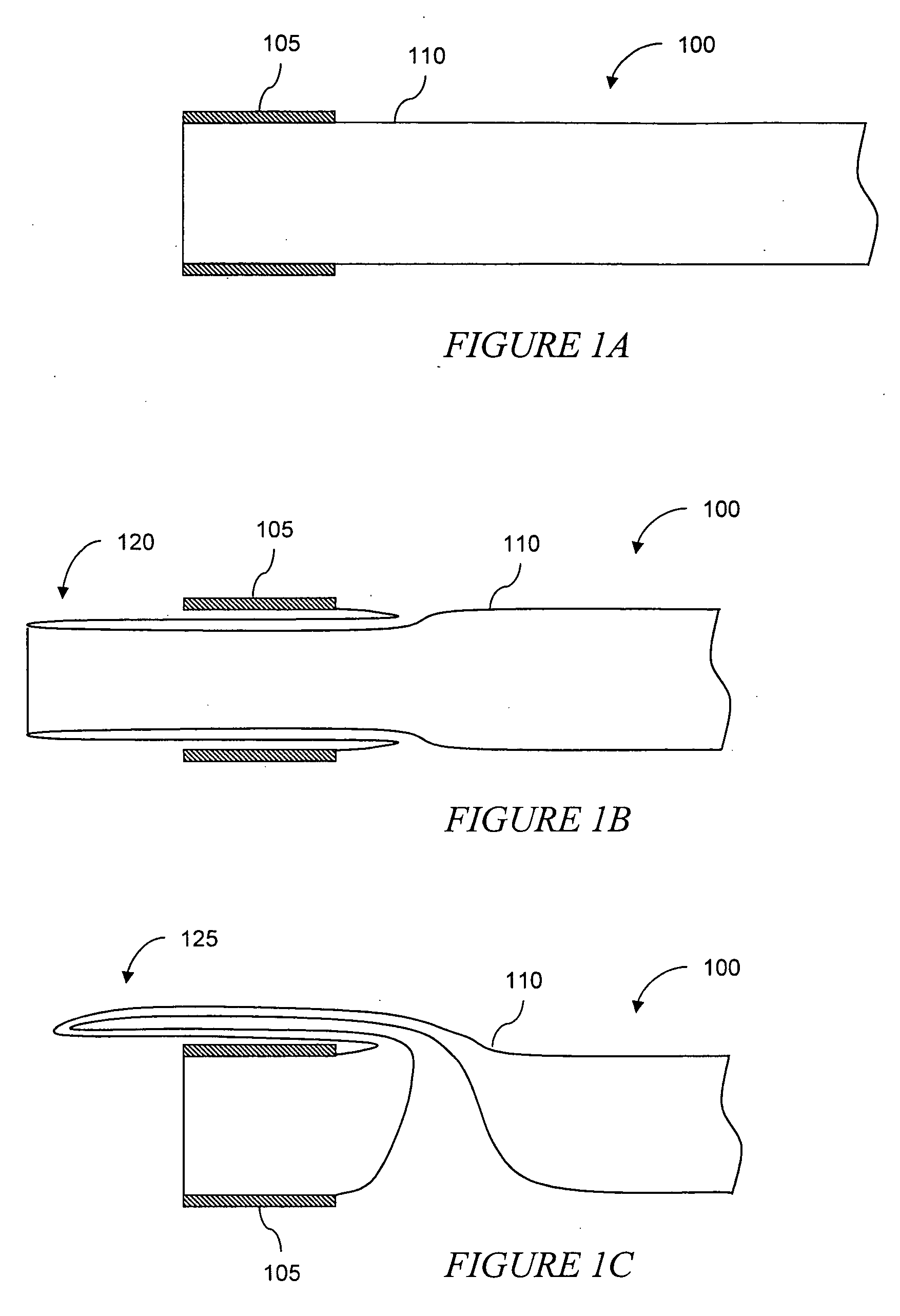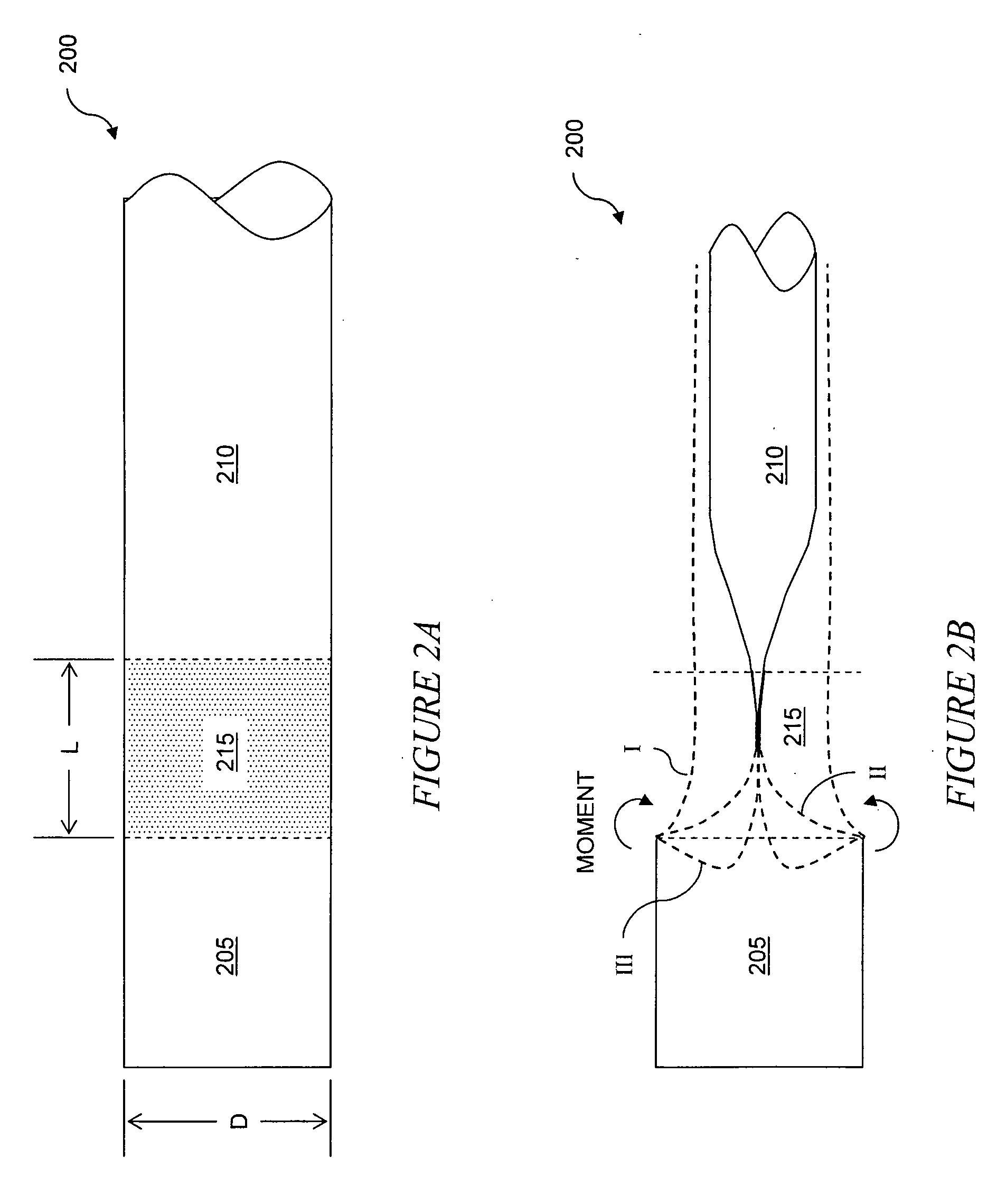Eversion resistant sleeves
- Summary
- Abstract
- Description
- Claims
- Application Information
AI Technical Summary
Benefits of technology
Problems solved by technology
Method used
Image
Examples
Embodiment Construction
[0028] A description of preferred embodiments of the invention follows.
[0029] This invention relates to a method and device for implanting a sleeve within a natural body lumen of an animal, the sleeve including an anti-eversion feature to inhibit eversion of the sleeve when implanted. In particular, the invention relates to a bypass sleeve adapted for use within the digestive tract of an animal. Some examples of such intestinal implants are described in U.S. patent application Ser. No. 11 / 000,099, filed Nov. 30, 2004, and entitled “Bariatric Sleeve”; U.S. patent application Ser. No. 11 / 001,794, filed Nov. 30, 2004, and entitled “Methods of Treatment Using a Bariatric Sleeve”; U.S. patent application Ser. No. 10 / 726,011, filed Dec. 2, 2003, and entitled “Anti-Obesity Devices”; U.S. patent application Ser. No. 10 / 810,317, filed Mar. 26, 2004, and entitled “Enzyme Sleeve”; and U.S. patent application Ser. No. 10 / 811,293, filed Mar. 26, 2004, and entitled “Anti-Obesity Devices” all inc...
PUM
 Login to View More
Login to View More Abstract
Description
Claims
Application Information
 Login to View More
Login to View More - R&D
- Intellectual Property
- Life Sciences
- Materials
- Tech Scout
- Unparalleled Data Quality
- Higher Quality Content
- 60% Fewer Hallucinations
Browse by: Latest US Patents, China's latest patents, Technical Efficacy Thesaurus, Application Domain, Technology Topic, Popular Technical Reports.
© 2025 PatSnap. All rights reserved.Legal|Privacy policy|Modern Slavery Act Transparency Statement|Sitemap|About US| Contact US: help@patsnap.com



